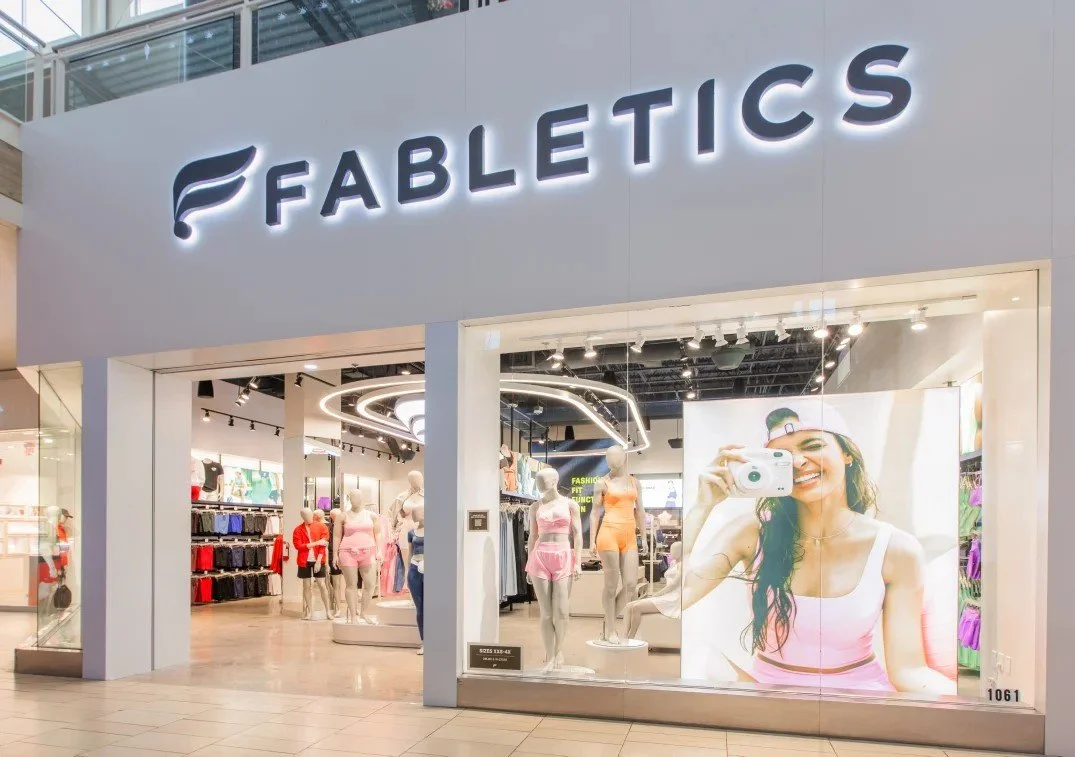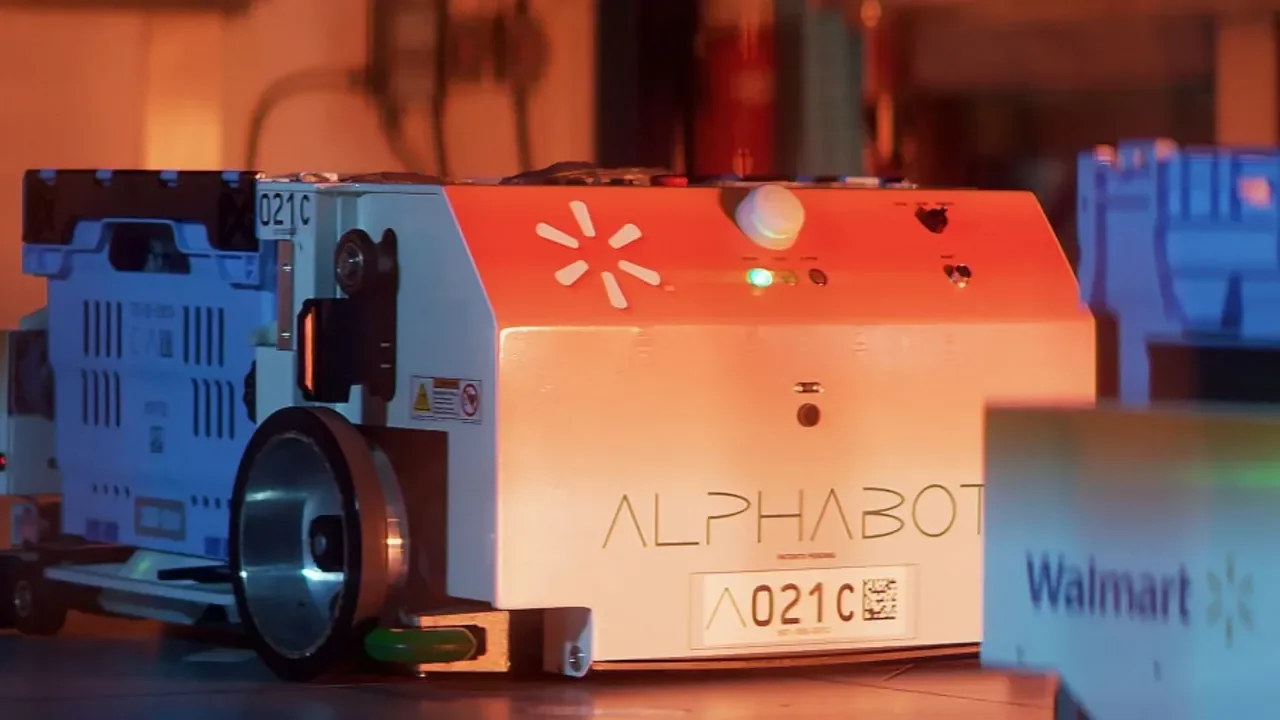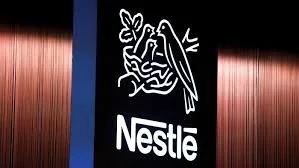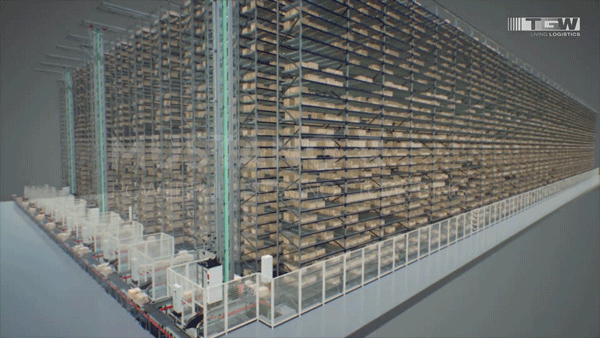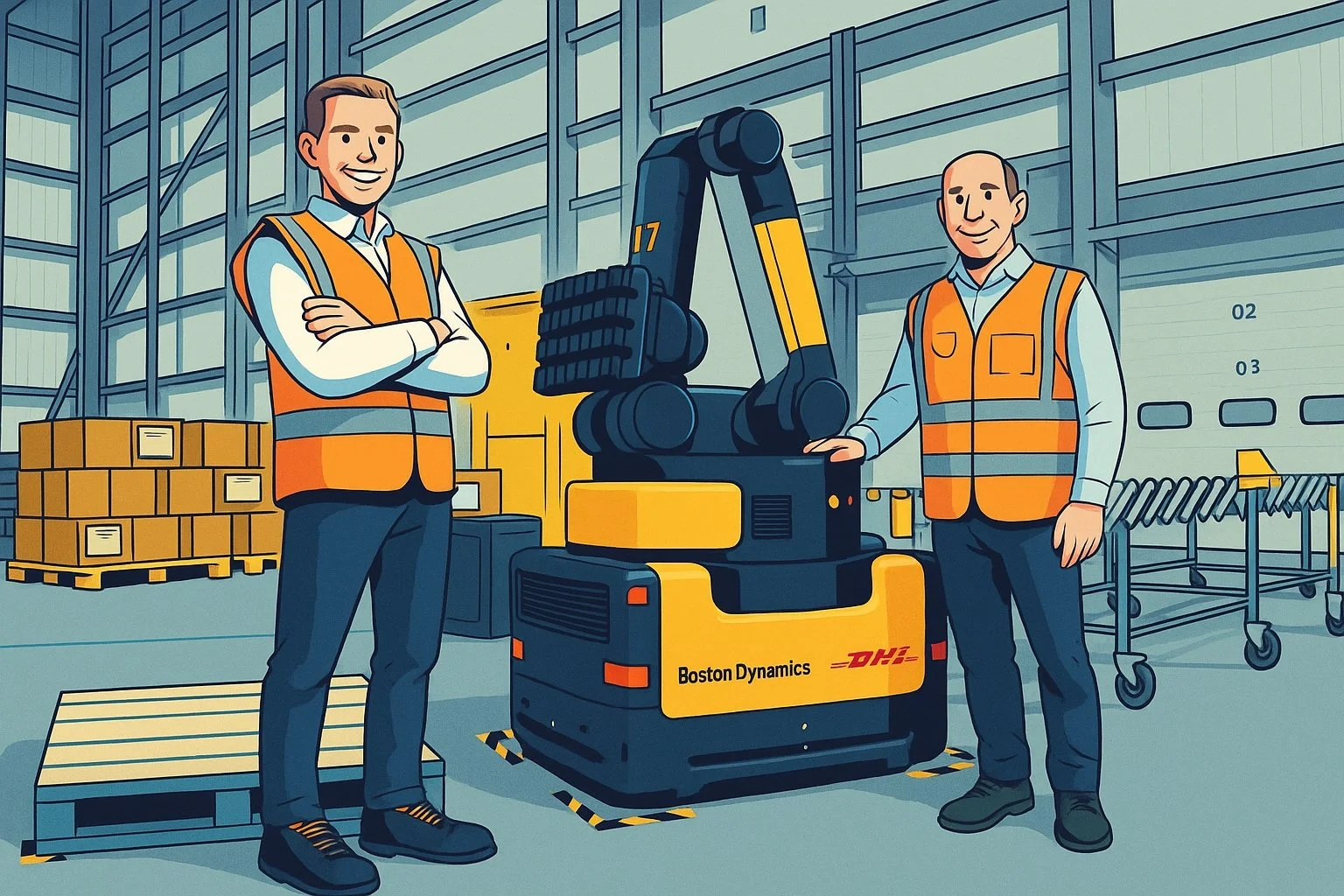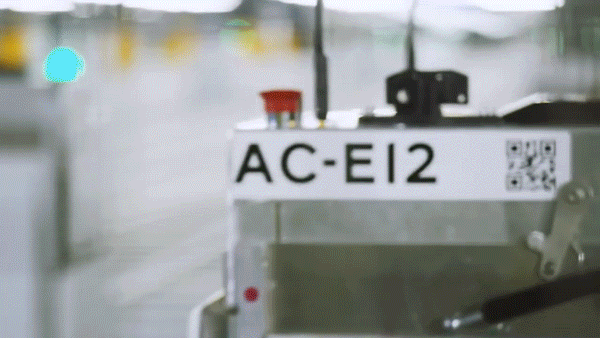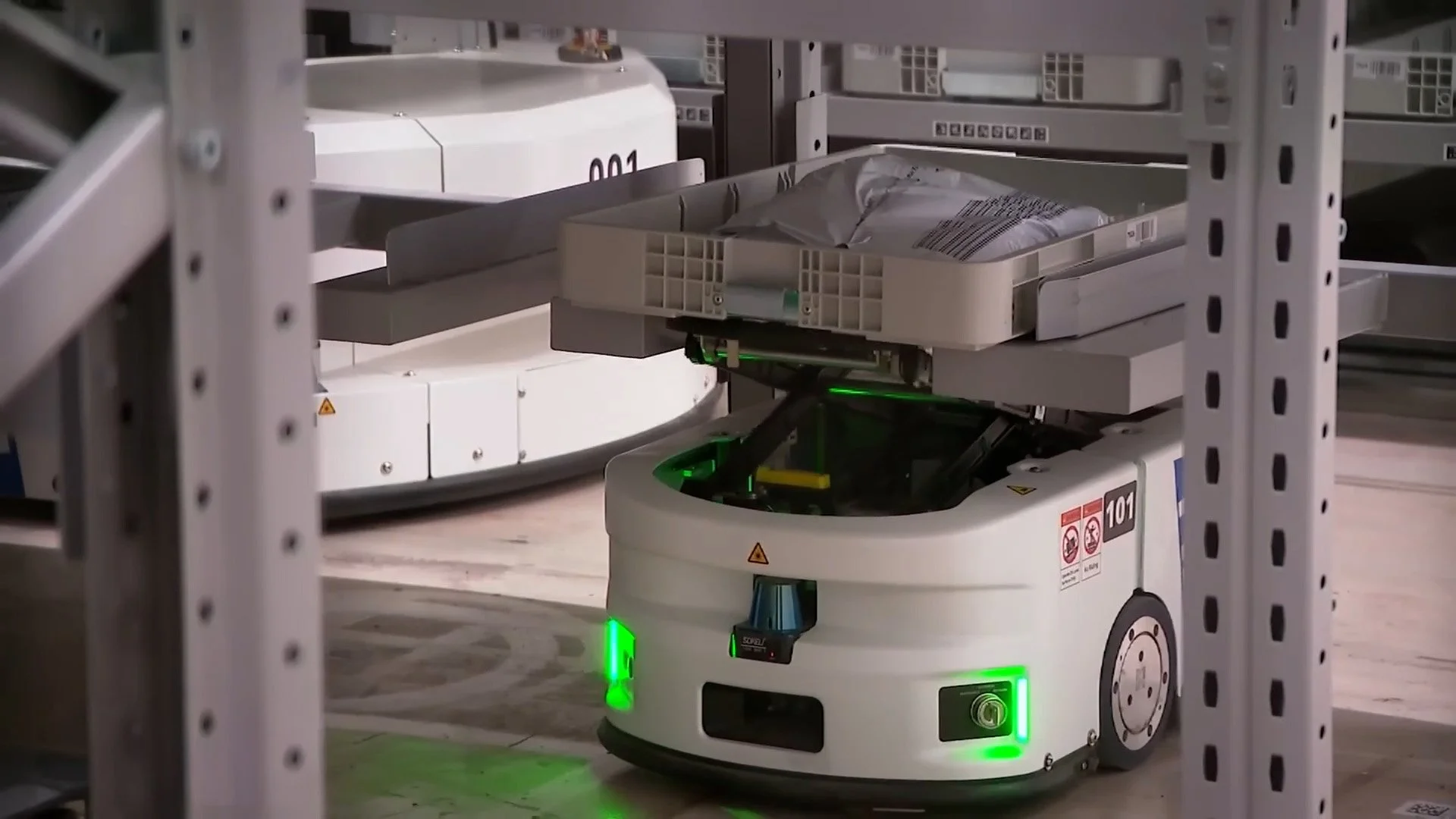Inside Amazon's State-of-the-Art Robotic Facility in Rhode Island
It took 70,000 cubic yards of concrete to build this Amazon facility, more than was used in the Empire State Building.
On the fifth floor of the new, towering Amazon distribution facility in Johnston, Rhode Island, supersized Roomba-like Hercules robots crisscross a mostly empty concrete floor in a giant fenced-off pen just for them.
A few scoots underneath carts filled with yellow cubbies and push them around the floor. Others sit dormant in a line.
A few stories below, the floor is filled with the carts and their yellow fabric. The faint sound of a robot wheeling across the floor heralds a cart's arrival or departure from what will become an employee workstation.
While the robots are training, human crews are building an estimated 12 miles of conveyor belts inside the new distribution facility. The Amazon center is slated to open by the fall, in time for the holiday rush.
When it is fully operational, the site will employ 1,500 people. That's more people than the entire full-time population of Block Island, estimated at 1,400.
Inside the massive Amazon facility in Johnston
While the hulking Amazon facility is visible from much of Johnston, the full scale of the building really shows itself when driving up. A sprawling 1,800-space parking lot leads to the front of the building and is accompanied by a large space in the back, with over 60 docks for semitrailers and 200 spaces for trailers.
The building is 3.8 million square feet spread across five floors, Amazon's Northeast Economic Development Director Jonathan Greeley said, leading the media and Gov. Dan McKee on a tour. Break rooms are scattered across the facility to minimize the walking workers must do during a shift.
"The robotics are meant to alleviate repetitive motions," Greeley said.
The first floor is where all the loading and unloading happens, with freight elevators that send products up to the warehouse facilities on the second through fifth floors.
The second through fifth floors are mostly operated and ruled by the Hercules robots. The floors are all fenced off, except for around the perimeter, to separate the robots and the humans. When a technician does have to go into the pen where robots quickly push upright carts filled with products, they will wear a special vest that should give them a buffer zone from being hit.
Workers will stand on the periphery at stations. Carts are brought to them and a light shines on the cubby hole with the product required. A worker will bring it out of the cubby hole and send it on a conveyor system to be packaged. The robot will then take away the cart and another will take its place.
"We used 70,000 cubic yards of concrete, more than was used to build the Empire State Building," Greeley said.
On the fifth floor, the robots were still training on the layout, running carts to and fro, while on the second floor, most of the training was done and the floor was filled with rows upon rows upon rows of carts.
How the new facility sits within Amazon's distribution system
The new Johnston warehouse will serve the entire Northeast and is the first stop for incoming goods.
On the first floor, slides bring down packages that are marked to delineate their destination. They'll either go directly to shippers like UPS and USPS, or onward for further sorting at another Amazon facility, like its "last mile" facility in Providence.
The Johnston facility only handles small products — things that could be carried onto a plane. The facility in Fall River is the second type of facility, handling larger items, while a third type of facility handles the really bulky things, like TVs and furniture.
1,500 jobs are coming to Rhode Island
In April, Amazon started posting management jobs for its new facility. Many of those positions are hired and the employees are being trained, Amazon spokesman Steve Kelly said.
The lion's share of the jobs will be hired 30 to 60 days before the facility opens in the fall, giving workers time to train. The minimum wage for Amazon workers is $17 an hour, while the average is $20.50 an hour. There will be "hundreds" of job types, Greeley said.
Most workers are full-time, which puts their yearly wage at $35,360 to $42,640. Benefits include full health coverage, paid parental leave, tuition reimbursement, and a retirement account match, he said.
One Amazon official previously put the payroll at $57 million a year.
A 2018 Economic Policy Institute report found that when Amazon opens a warehouse, the number of warehouse jobs goes up, but the total number of jobs in an area does not change, with new warehousing jobs "likely offset by job losses in other industries."
When will people work?
When the facility is fully up and running, most workers will put in four 10-hour shifts a week, and a few hundred people will be working in the facility at any given time.
The facility will operate all day and night.
Amazon gets its own stoplights, bus stop
Amazon agreed to build a bus stop for its employees as part of its community agreement. It plans to help reroute the Rhode Island Public Transit Authority's Route 28, including a stop at the Amazon distribution campus. Employees who request it will also be given free bus passes.
Amazon widened Hartford Avenue and put in a stop light, with a dedicated turn lane for one of its entrances, which Rhode Island Department of Transportation Director Peter Alviti Jr. previously said would greatly improve safety.

















